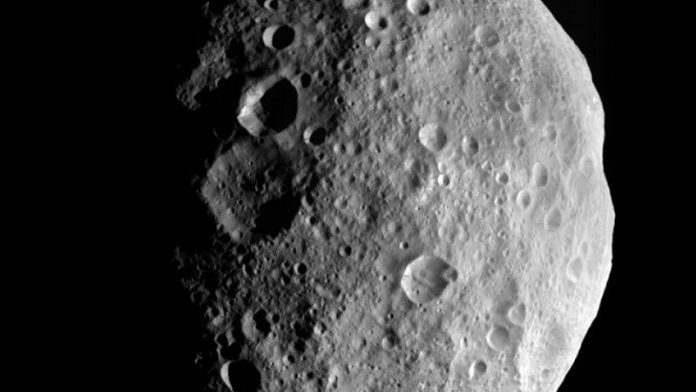
Scientists have reconstructed the 22-million-year journey of an asteroid through the Solar System to its impact on Earth.
The research on the flight path of the asteroid, which landed in the Kalahari Desert in Botswana on 2 June 2018, is the first time that scientists have precisely mapped a meteorite’s voyage to Earth.
The breakthrough offers new insights into the Solar System’s ancient past, including a better understanding of its second-largest asteroid and the only one visible to the naked eye.
NASA Ames Research Center and the SETI Institute in the US led the international research, which involved scientists from The Australian National University (ANU) and Curtin University in Western Australia.
The team mapped the one-way trip of the asteroid, called 2018LA, using two of NASA’s hazardous asteroid hunting telescopes and the ANU SkyMapper telescope in New South Wales.
CCTV camera footage also captured the final moments of the asteroid, which appeared as a fireball hurtling through the sky prior to impact.
ANU astronomer and co-researcher, Associate Professor Christian Wolf, said the asteroid had a 1.5-metre diameter, weighed about 5,700kg and travelled at around 60,000kph before breaking up in Earth’s atmosphere and hitting the ground.
“As the asteroid broke up 27 kilometres above ground, it was 20,000 times brighter than the full moon,” Associate Professor Wolf, from the ANU Research School of Astronomy and Astrophysics, said.
Associate Professor Wolf said the ANU SkyMapper Telescope has a proven capacity to detect dangerous asteroids as well as space debris.
The resulting meteorite is called Motopi Pan, and searches in the Kalahari picked up 23 fragments for mineralogical analysis.
Curtin astronomer Dr Hadrien Devillepoix said this is only the second time that scientists have been able to observe an asteroid in space prior to striking Earth.
ANU astronomer Dr Christopher Onken quickly analysed images from SkyMapper’s 268-Megapixel wide-field camera.
“I could hardly believe my eyes when I came upon a little object that appeared to be moving across images taken by SkyMapper,” Dr Onken, the ANU SkyMapper Project Scientist, said.
“These last images before the asteroid entered Earth’s atmosphere were SkyMapper’s biggest contribution. They helped to pinpoint both the search area for the meteorite fragments on Earth and the meteor’s origin in space.”
Dr Onken said the trajectory leads back to Vesta, the second-largest asteroid in the Solar System and “the only one bright enough to be sometimes visible to the unaided eye”.
“The oldest known materials found both in Vesta and in the meteorite are Zircon grains that date back to more than 4.5 billion years ago, during the early phase of the Solar System.”
Dr Devillepoix said the 2018LA asteroid ejected from Vesta about 22 million years ago during an impact that formed a crater in Vesta’s Veneneia basin.
“Analysis of the meteorite indicates it was deeply buried under the surface of Vesta prior to being ejected all those years ago,” he said.
“This achievement is complementary to sample-return probes like Hayabusa-2. This research allows us to progressively map out the composition of the asteroid belt, and we can get a better idea of the type of material Earth-threatening asteroids are made of.”
The international team’s work helps to the date the formation of Vesta’s Veneneia basin, to an estimated 4.2 billion years old.
The research is published in Meteoritics and Planetary Science.



